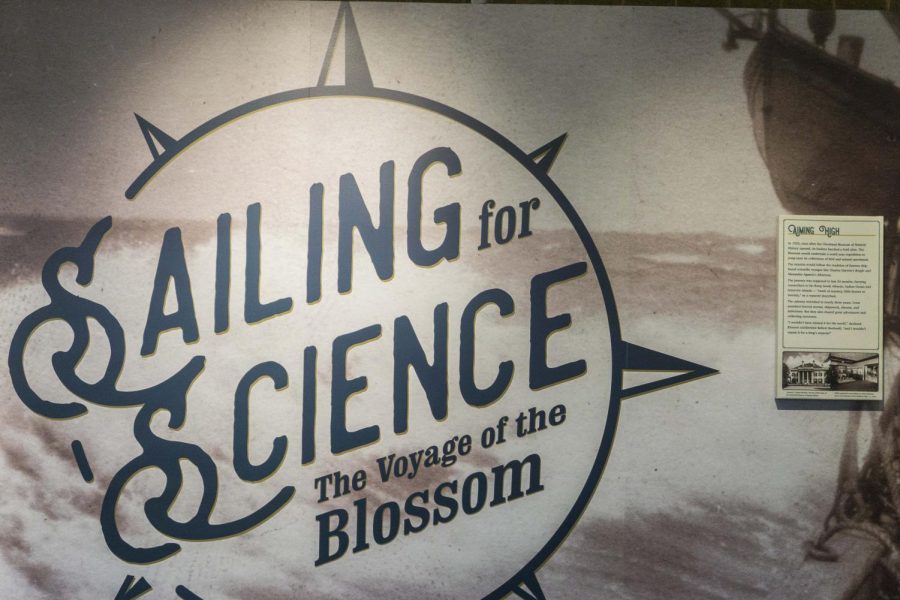Natural History Museum of Cleveland exhibit sets sail
The Cleveland Museum of Natural History’s new sailing exhibit features The Blossom, a ship which sailed the world’s oceans in the early 1920s. The exhibit includes a survey done by W.E. Rice, an associate professor of municipal engineering at the Case School of Applied Science who produced an adapted map of the ship’s travels.
The Cleveland Museum of Natural History (CMNH) recently unveiled its newest exhibit, entitled “Sailing for Science: the Voyage of the Blossom.” It showcases dozens of original documents, reports, preserved specimens and photographs from the expedition of its own sail ship, the Blossom, which went on a three-year expedition beginning in 1923.
Designed completely in-house, the exhibit is a way for visitors to relive the experiences of the Blossom’s crew, and through it, a significant, yet oft-forgotten, piece of Cleveland history.
The CMNH sponsored the Blossom’s expedition in 1923 to collect plant and animal specimens from around the world to add to its collections. Over almost three years, the ship, along with its crew of biologists, surveyors and sailors, travelled 22,000 miles and collected 13,000 specimens, many new to science.
The expedition cemented the CMNH’s reputation as a prominent research institution, and field work is still performed today on the findings from the Blossom voyage.
Librarian and archivist Wendy Wasman, the exhibit’s curator, had a treasure trove of archives to dig through when putting the exhibit together.
“This expedition was so well documented for the time,” her voice narrated in a video that plays near the front of the exhibit.
Stepping into the exhibit is like stepping into a piece of history; colorized photographs line the walls, documenting the crew’s adventures in parts of Africa, islands across the Atlantic, Trinidad and more. A full mock-up of the captain’s desk sits in the center, with the log book that was kept on the expedition, tools he used, a survey map drawn by the surveyor and other original items.
The flag that flew atop the mast of the Blossom hangs restored on the wall, while other navigational tools, documents, correspondence to and from sailors, preserved fish, geckos, lizards and more line the walls and display cases.
“It’s incredible that [this expedition] was so important and grand, but so connected to [Cleveland] as well,” said a visitor of the exhibit.
Not only was the Blossom’s expedition sponsored by the CMNH and manned by Clevelanders, but shares an intimate connection with Case Western Reserve University as well. The surveyor whose adapted map is on display was W.E. Rice, an associate professor of municipal engineering at the Case School of Applied Science.
The Blossom’s voyage is a testament to the energy and ambition of a period of time when the city of Cleveland reached the peak of its growth; in the 1920s, it was the fifth-largest city in the United States, and cultural institutions like the CMNH were spearheading research across the world.
Wasman narrated , “I hope visitors will leave here feeling inspired by our history and feel like it was an exciting chapter in our history. And also to understand that museums still do this today. [This] is our legacy.”
The Sailing for Science exhibit will be open until Aug. 5. It joins other rotating exhibits, including one on women in science and one on pterosaurs.
Yugan is a third year student studying philosophy and physics. He writes about concerts, albums, and the intersection of art forms.


